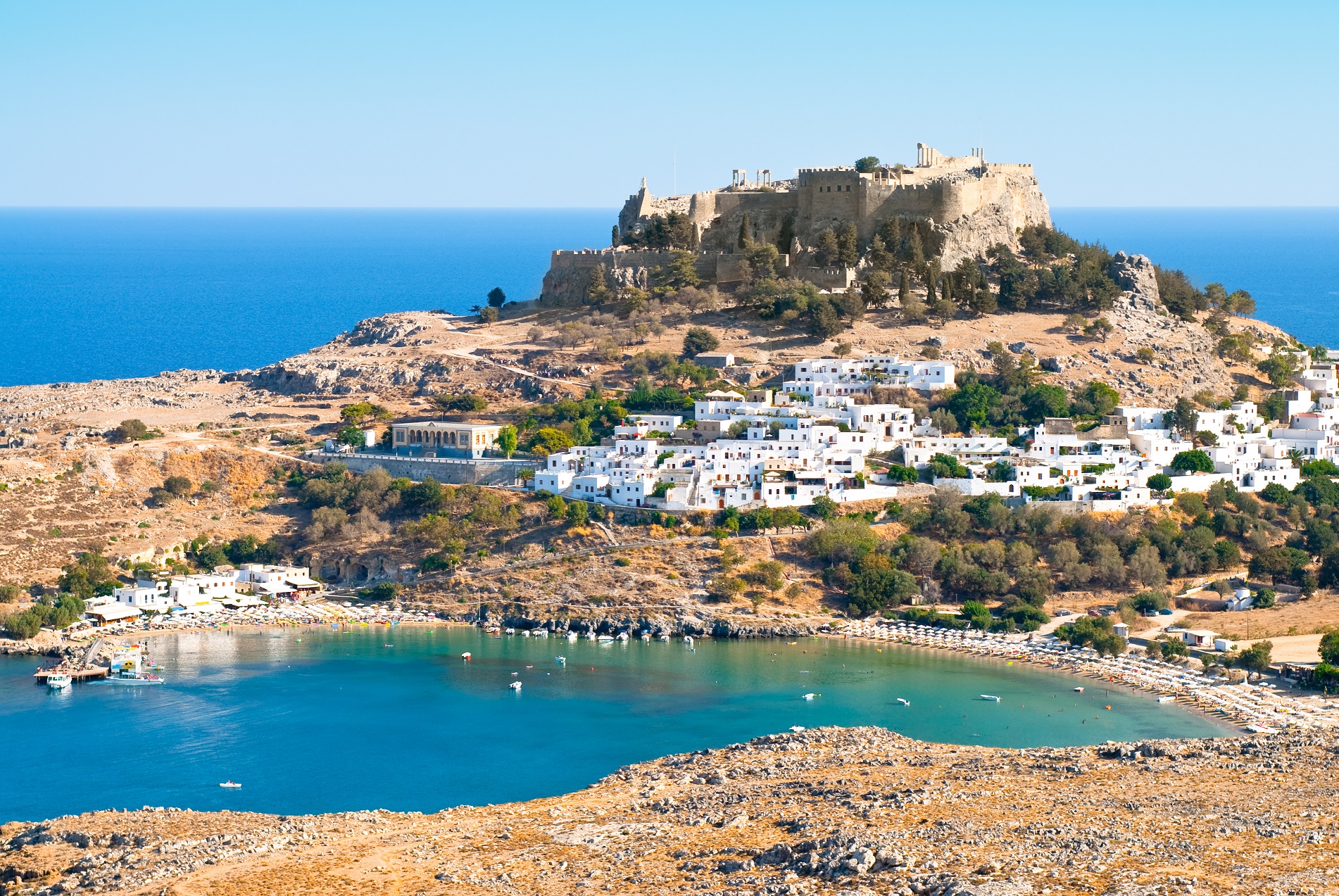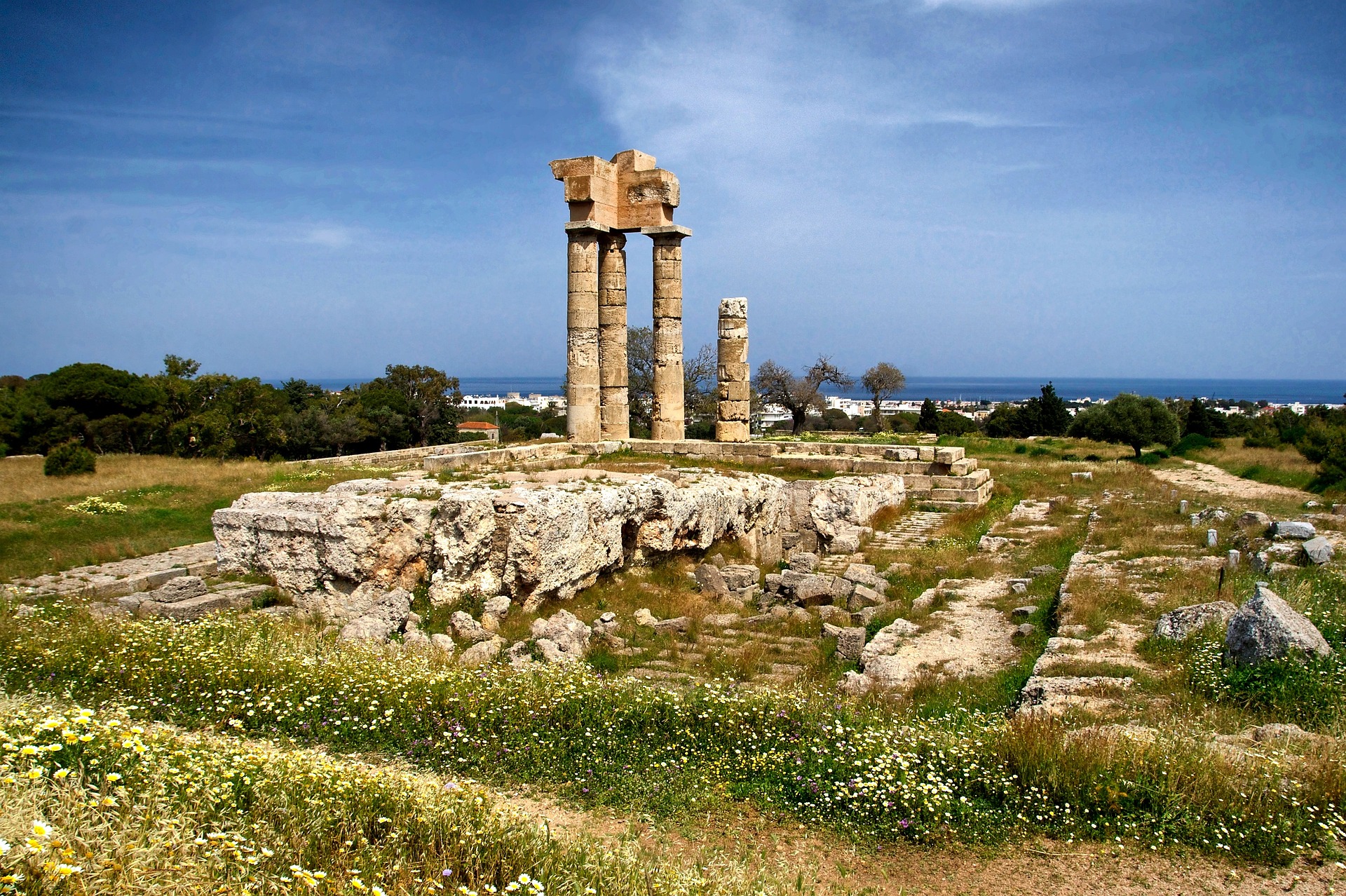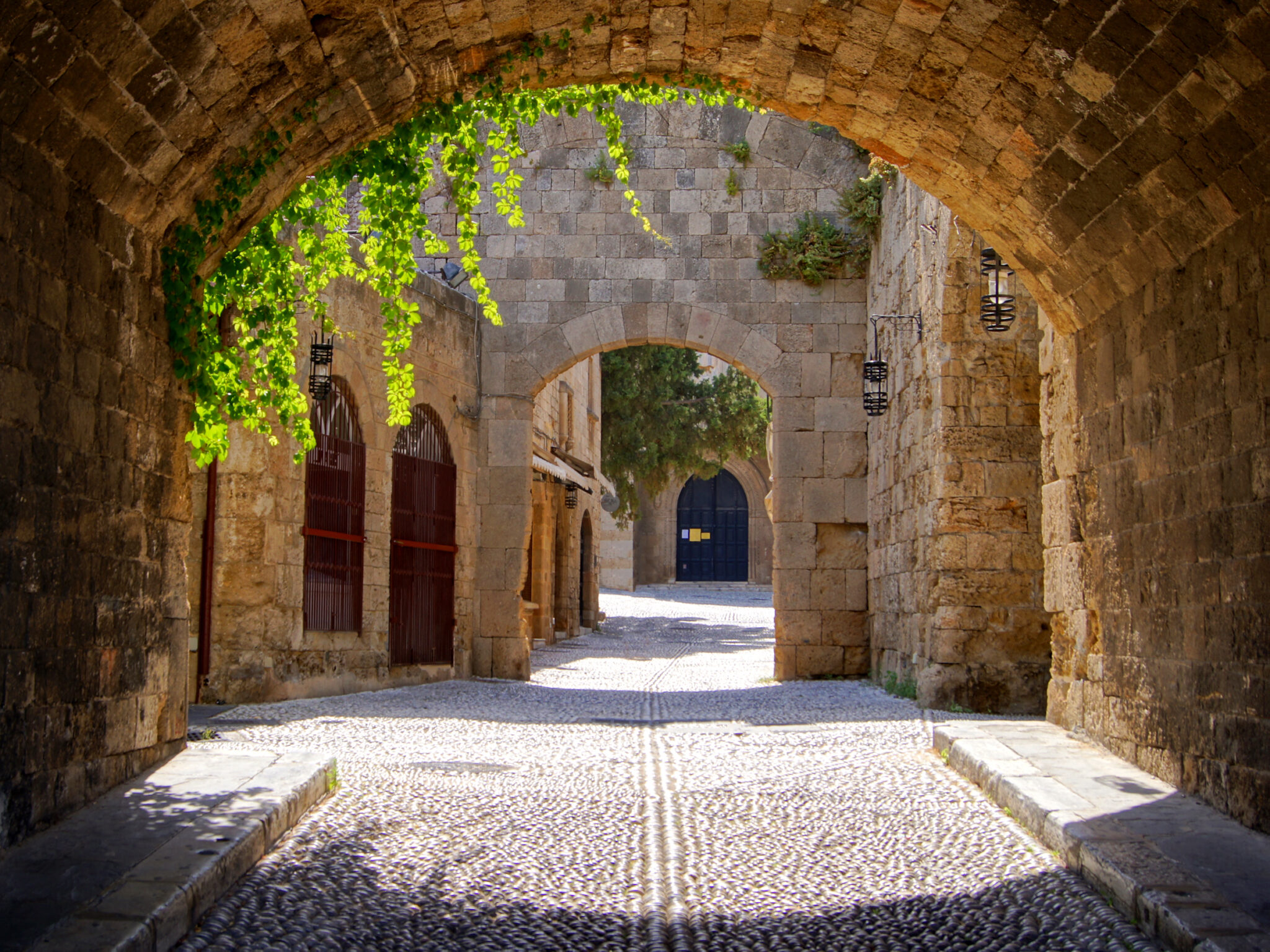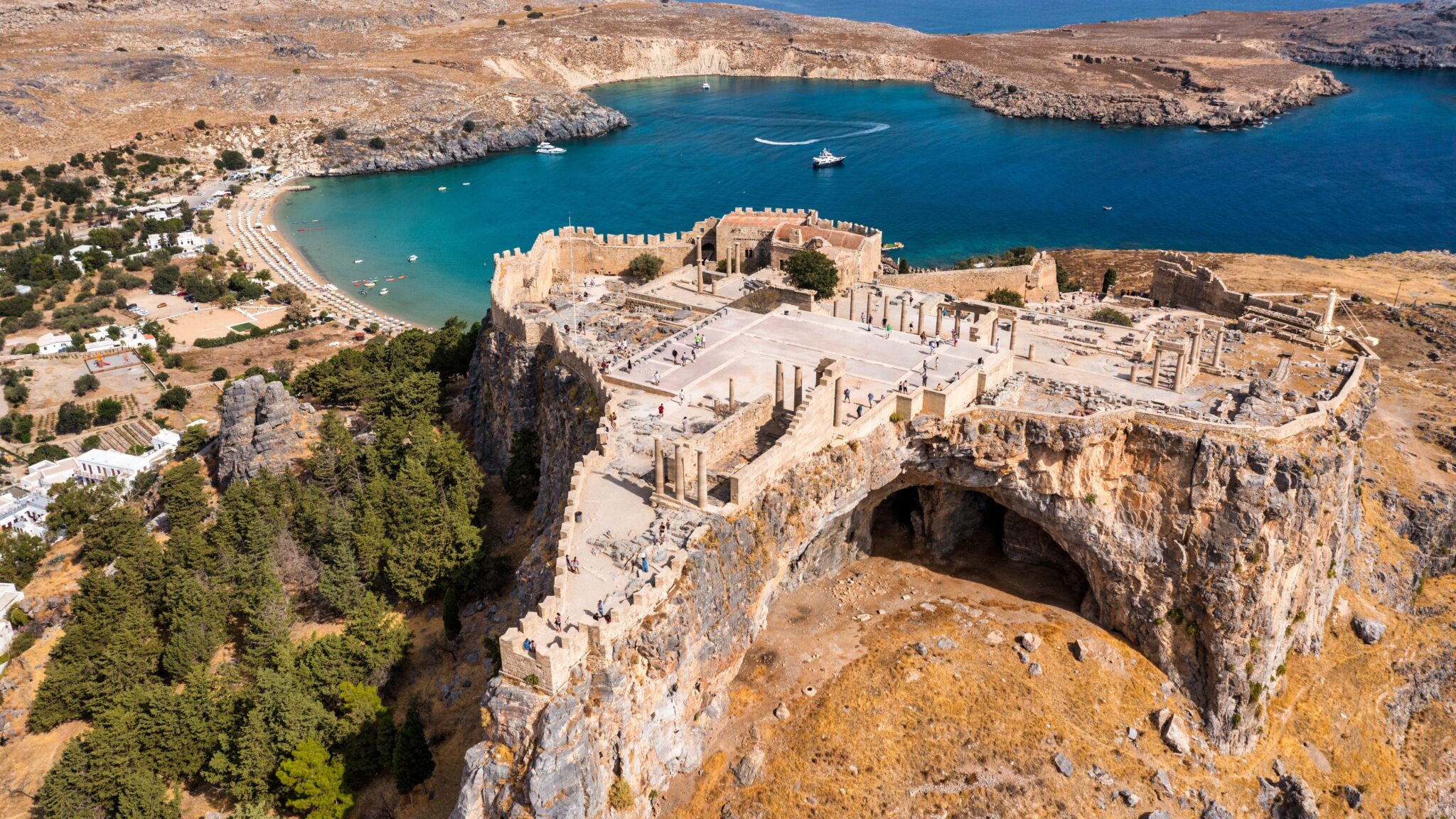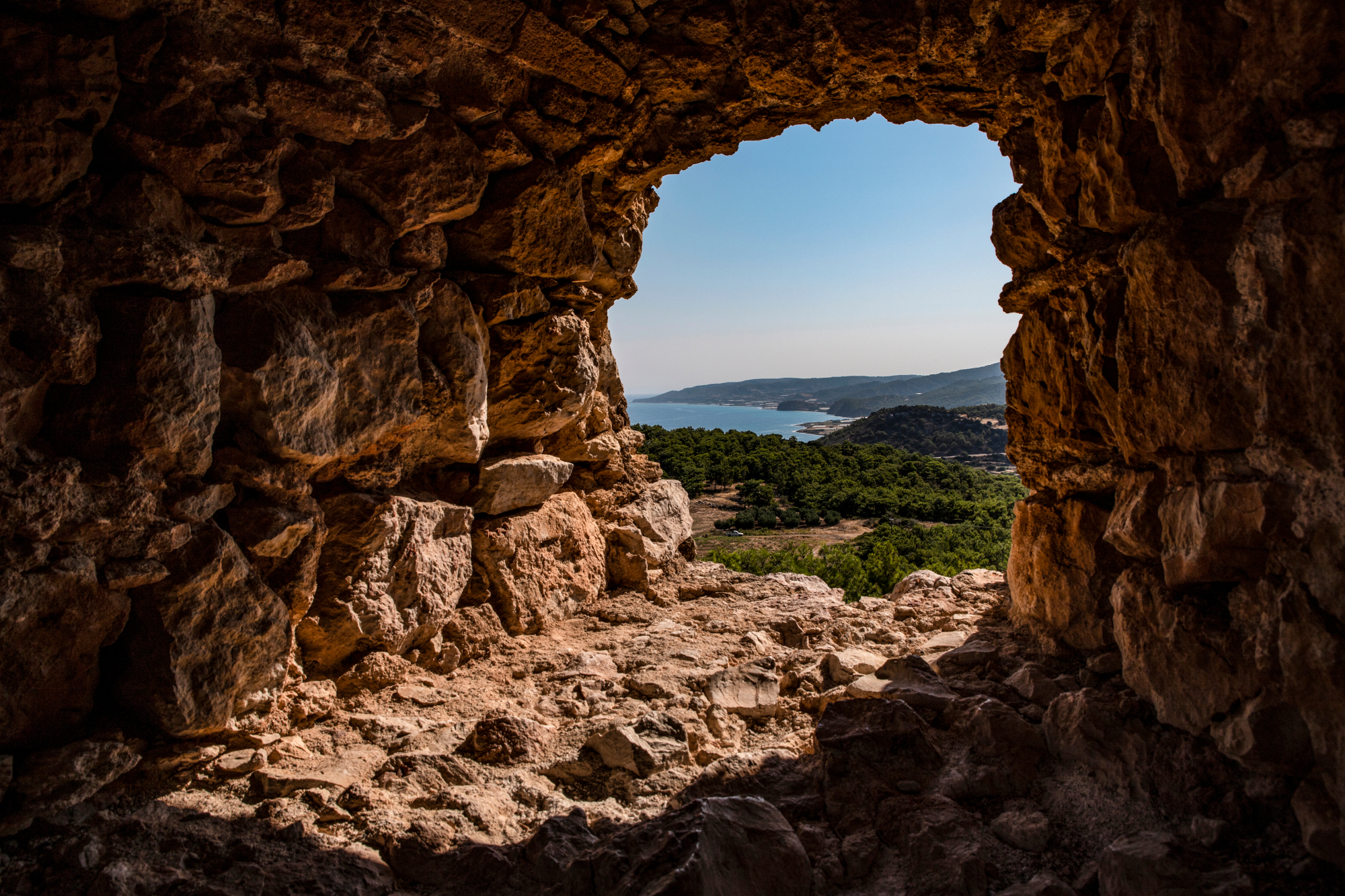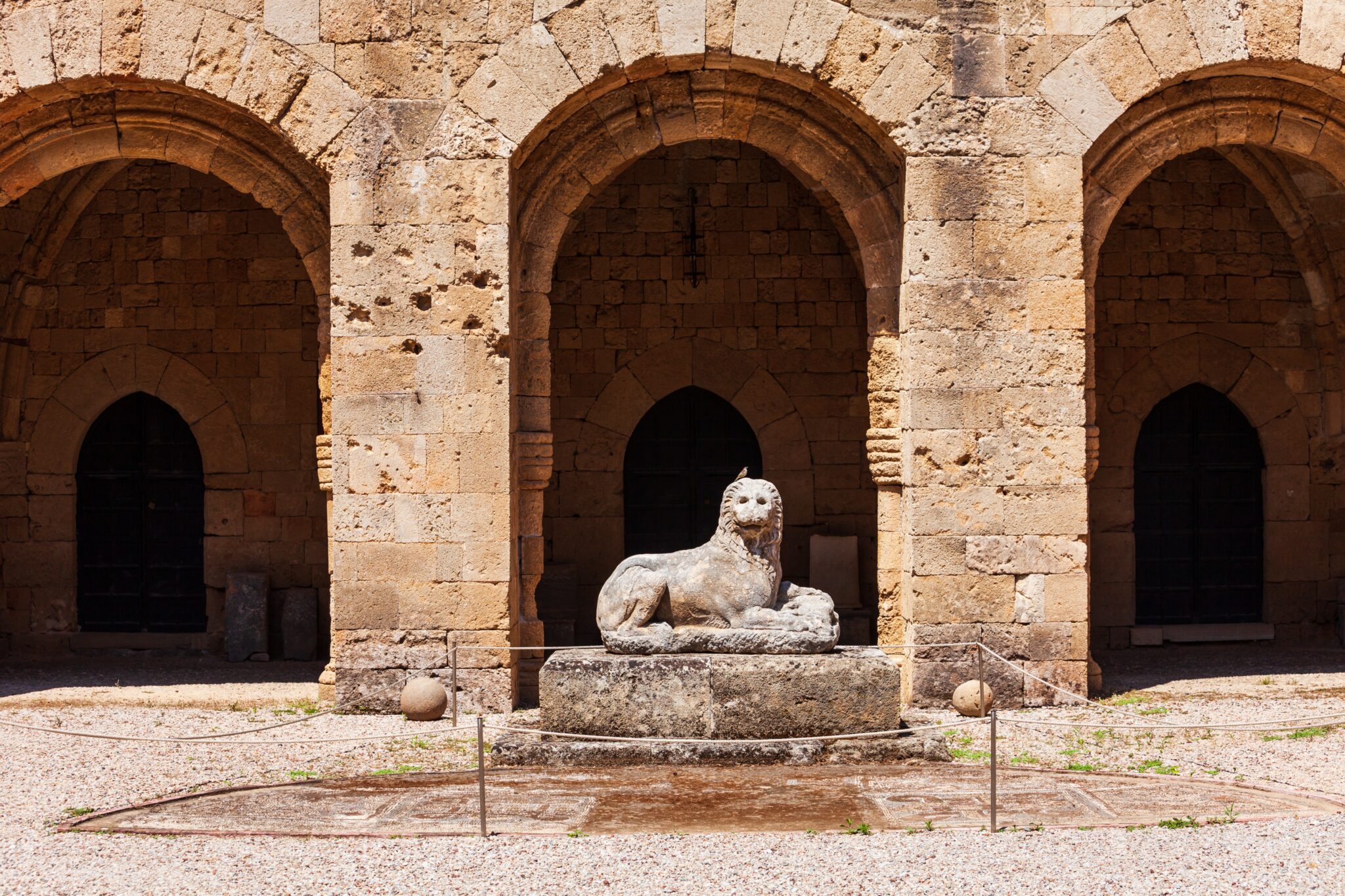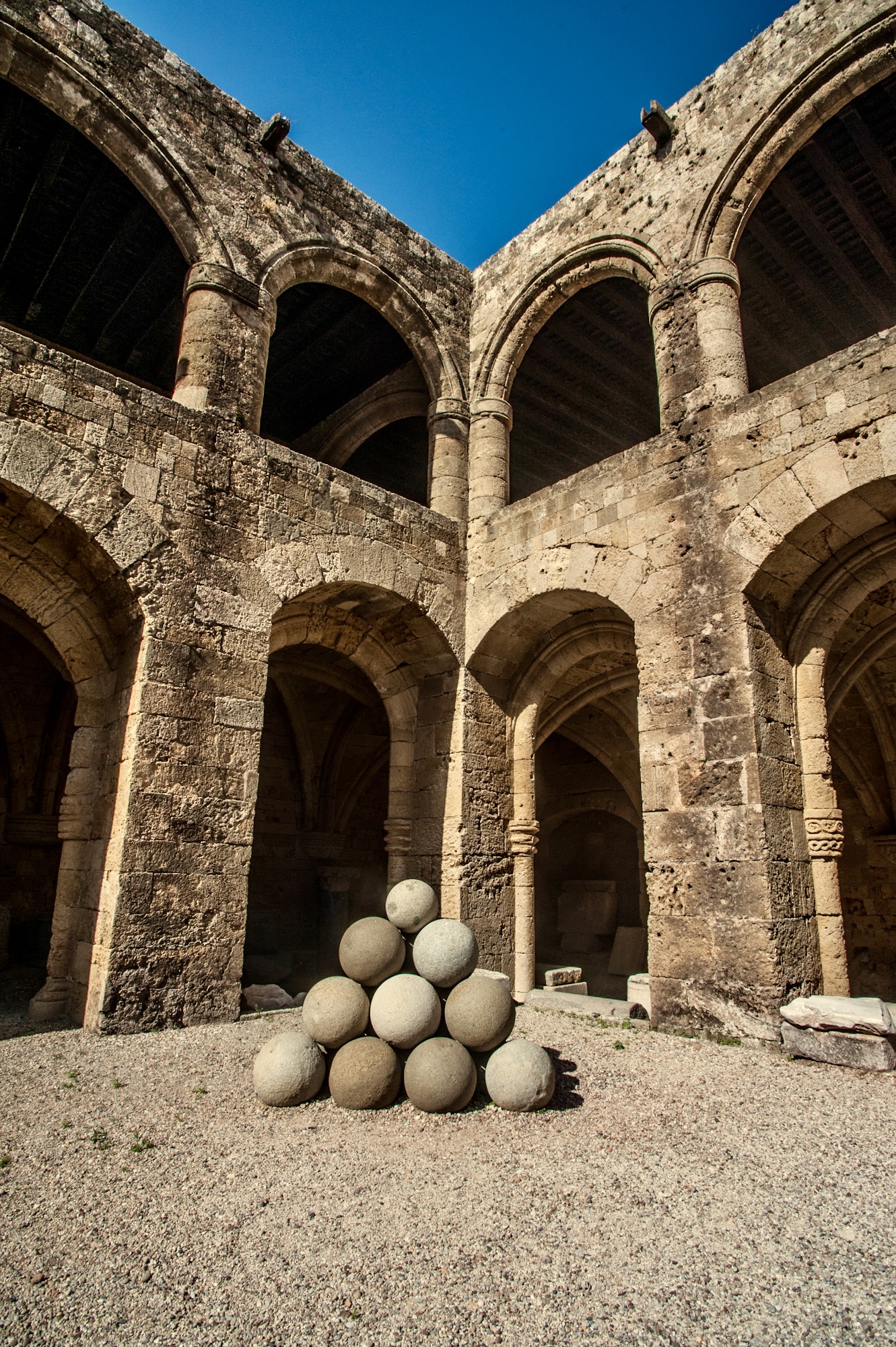Rhodes, a Dodecanese Island steeped in history, is a treasure trove of archaeological wonders. Its strategic location in the Aegean has shaped a rich past, with influences spanning ancient Greece, the Byzantine Empire, and the Knights of St John. These layers of history are reflected in its remarkable sites, from ancient temples to well-preserved medieval landmarks. For history enthusiasts and curious travelers alike, Rhodes offers an immersive journey through time.
This article highlights the island’s most fascinating archaeological destinations. Whether exploring ancient acropolises, grand fortresses, or mythical ruins, you’ll uncover the history that has shaped Rhodes into what it is today.
01
The Acropolis of Rhodes
It was not fortified, but monumental, and consisted of sanctuaries, large temples, public buildings and mysterious underground places of worship. It is said that the great mathematician/astronomer Hipparchus (190-120 BC father of trigonometry and the man who discovered the procession of the equinoxes) made his observations from here.
In 1924, excavations revealed a Doric temple dedicated to Apollo Pythios (four restored columns stand upright today). An ancient stadium, also restored, lies beneath the temple of Apollo. Next to it you can see the Roman Odeon and Gymnasium, while to the north the remains of the Doric temple of Zeus Polias and Athena Polias have been found.
02
The Medieval Old Town
Step into Rhodes’ medieval old town, where cobbled alleys wind through centuries of history. Byzantine domes, Gothic facades, and Ottoman mosques sit side by side, revealing the island’s layered past. The Palace of the Grand Master stands as its centerpiece, while the Street of the Knights provides a vivid connection to the Crusaders. Today, the old town’s lively atmosphere, filled with cafes and shops, blends modern energy with its historic roots, making it an unforgettable place to explore.
Before entering the Old Town, stop to look at the Porte de la Marine, once an integral part of Rhodes’ medieval defenses. Today, it is the entryway to the bustling old town.
03
The Acropolis of Lindos
This remarkable ancient site, rising above Lindos village, is as much about dramatic views as historic significance. This was the most well fortified point of the island, rising above the settlement on top of a cliff. The area enclosed by the mediaeval walls stretches round 8,400 meters. At the top of the acropolis you can see a ship’s stern carved into the rock, the work of master sculptor Pythocritus, which dates back to the 2nd century BC. Pythocritus also created the magnificent Nike of Samothrace which is on display at the Louvre.
The Temple of Athena Lindia, built to honor the island’s protector goddess, dominates the acropolis. The steep climb to the top is immediately rewarded when one looks out on jaw-dropping panoramas of the coastline. The ruins provide a glimpse into the island’s spiritual and architectural heritage. Both visually and historically captivating, it’s a highlight of any visit to Rhodes.
04
The Castles
Kritinia Castle: Once an imposing stronghold on Rhodes’ western shore, Kritinia Castle offers visitors a chance to step back into the island’s defensive history. The ruins, built in the 15th century, include towers and corridors that evoke its role as a watchful guardian of the Aegean. Elevated above the sea, the castle provides impressive views, while its nearby village offers a taste of local life. Its remote charm and historical appeal make it a must-see destination.
Monolithos Castle: Set on a cliff on Rhodes’ southwestern coast, this 15th-century castle was built to guard against seaborne threats. Though much of it has weathered away, its walls and towers still offer a sense of its strategic importance. Reaching the site requires a climb, but the reward is worth it: unparalleled views of the Aegean, especially at sunset.
05
The Archaeological Museum
The Archaeological Museum of Rhodes, previously the Hospital of the Knights, dating back to 1489, encloses a historic Byzantine courtyard. This erstwhile hospital, which catered to knights and townsfolk, now exhibits relics from Rhodes’ ancient cities of Ialysos, Kameiros, and Lindos, as well as neighboring islands. Its collection boasts a splendid array of ceramic amphoras and oenochoe, evidencing the island’s affluent trade history.
The museum sequentially presents the evolution of Attic pottery, ranging from early geometric patterns to the distinguished red-on-black figures from the 5th century BC. Amongst its treasures are two famed representations of Aphrodite, including the “Aphrodite of Rhodes” and “Aphrodite Thalassia,” and two 6th-century BC kouros statues from Kameiros.
06
The Hafiz Ahmed Agha Library
Founded in 1793, this library reflects Rhodes’ intellectual pursuits during the Ottoman period. The collection, filled with rare manuscripts, is housed in a tranquil space near the Sulemaniye Mosque.
The library’s understated architecture and serene atmosphere offer a quiet contrast to the old town’s buzzing energy. For those interested in Rhodes’ diverse cultural heritage, this library provides a meaningful stop to reflect on the island’s literary and scholarly history.



